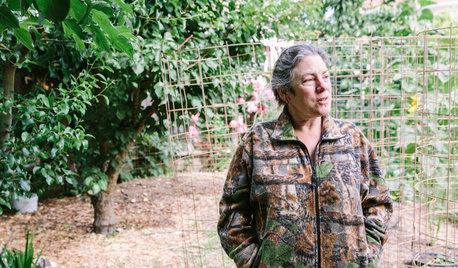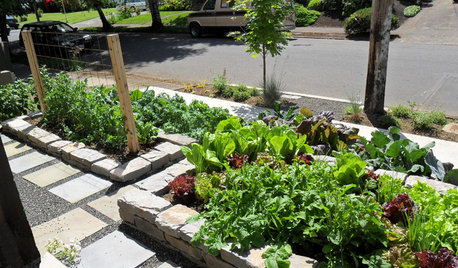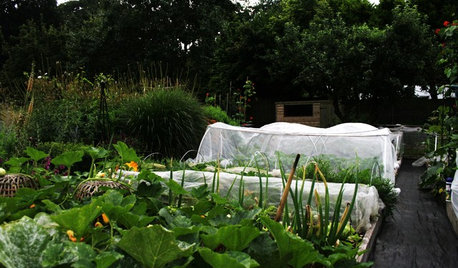Fall is the perfect time to take advantage of Mother Nature and improve our garden soil. As we reap the harvest of the vegetable garden, we need to consider how to give back nutrients to the soil for the following spring. After adding compost, manure and store-bought soil amendments, the next step is to sow a cover crop, sometimes called green manure.
{{gwi:44975}}
Finally, a cover crop offers soil protection from winter weather; stabilizing it and preventing wind and rain erosion, nutrient leaching and compaction. With all these advantages, it is easy to see why growing a cover crop is much preferable to leaving the soil bare.
{{gwi:44977}}
Cover crops may be sown on vacant soil, seeded between rows of winter veggies, or transplanted as seedlings into the empty areas of perennial or shrub borders. The crop you choose to grow depends on how early and harsh your winter is, what nutrients you are most in need of and, most importantly, whether you want to till in your green manure or simply cut it down to use as compost or mulch.
While a cover crop improves the soil in many ways, a primary benefit is the addition of nitrogen, allowing the plants to make good growth in the absence of nitrogen fertilizer and in cold soil. Many cover crops are from the legume family, which have roots that are colonized by rhizobia bacteria that extract atmospheric nitrogen from the air and "fix" it into the usable nitrogen required for their own growth.
All green manures will add valuable nutrients to the compost; so if you choose not to dig it in, simply cut and toss, leaving the roots in the garden bed.
Sow cover crops as soon as the soil is bare. Although they are primarily planted in the spring or fall, you can germinate cover crops at any frost-free time of the year. For fall choose a winter-hardy grower, such as vetch or peas. It is miraculous how these cool-season growers can trap the energy of our winter sun and turn it into nutrients for our gardens
Winter Compost Booster
Apply once a month during November, December, January and February. This is suitable for any compost pile, up to 3 cubic yards in size. For portable bins of less than 50 litres (12 gallons), use one quarter of this blend.
1 shovel bone meal
1 shovel blood meal
1 shovel glacial rock dust
250 ml (1 cup) molasses
Tip: In fall, dont compost weeds that have gone to seed. Throw them in the garbage. Your winter compost might not heat up enough to sterilize the seeds, which can sit dormant for up to 100 years (or pop up in your garden when you use the compost). Weeds that have not gone to seed can safely be added to the pile; in fact dandelion will help break it down faster.
As with any crop, be sure to rotate and alternate your cover crops. Yes, even cover crops can become victims of pests or diseases. Rotation will also ensure that the soil benefits from many different sources. One season it may get an extra boost of nitrogen, the next season it may get improved texture or extra calcium. Just be sure to note the main benefit of the cover crop you are growing and alternate it with others that have different qualities. For garden soil, variety in cover crops is the spice of life!
Your cover crop will begin to fix nitrogen and nutrients in the soil immediately, and its roots will aerate and break up the soil. Youll know its time to dig the plants in or cut them off as soon as they begin to show the first flower or tassel. Never let cover crops produce seed(unless you are trying to buil up your stock of green manure seeds from them first); the plant begins to rob the soil of nutrients at this stage. The exception to this rule is clover; the flowers are attractive and beneficial to bees.
After you dig green manure into the soil, allow the soil to rest for three weeks before planting. If you choose the no-dig method and cut your crop, simply throw the tops into the compost and allow the soil to rest for a week before planting. Whichever crop or method you choose, you can expect better soil structure, fewer weeds and improved nutrients all the results of wonderful planning and the art of green manure.
Nutrient Enhancement
In addition to nitrogen from legumes, cover crops help recycle other nutrients on the farm. Nitrogen (N), phosphorous (P), potassium (K), calcium (Ca), magnesium (Mg), sulfur (S), and other nutrients are accumulated by cover crops during a growing season. When the green manure is incorporated, or laid down as no-till mulch, these plant-essential nutrients become slowly available during decomposition. Dr. Greg Hoyt developed a method for estimating nutrient accruement by cover crops in order to reduce the soil test recommendation of fertilizer for the following crop. (10) Table 4 shows the biomass and nutrients accumulated by several cover crops he worked with.
Table 4. Biomass yield and nutrient accruement by selected cover crops.
Crop Biomass* Nitrogen Potassium Phosphorus Magnesium Calcium
lbs/ac lbs/ac lbs/ac lbs/ac lbs/ac lbs/ac
Hairy Vetch 3,260 141 133 18 18 52
Crimson Clover 4,243 115 143 16 11 62
Austrian Winter Peas 4,114 144 159 19 13 45
Rye 5,608 89 108 17 8 22
*Dry weight of above ground plant material.
(Sorry that the table got transferred a bit garbled; just follow the order of the nutrients' lbs per plant/biomass per acre)
Certain broad-leaved plants are noted for their ability to accumulate minerals at high concentrations in their tissue. For example, buckwheat, lupine, and sweet clover are noted for their ability to extract P from soils. Likewise, alfalfa and other deep-rooting green manures scavenge nutrients from the subsoil and translocate them upwards to the surface rooting zone, where they become available to the following crop.
The breakdown of green manures in soil influences mineral nutrient availability in another way. During decomposition of organic matter, carbonic and other organic acids are formed as a byproduct of microbial activity. These organic acids react with insoluble mineral rocks and phosphate precipitates, releasing phosphates and exchangeable nutrients.
Rooting Action
The extensive root systems of some cover crops are highly effective in loosening and aerating the soil. In Australian wheat experiments, the taproots of a blue lupine cover crop performed like a "biological plow" in penetrating compacted soils. (11) When cover crops are planted after a subsoiling treatment, they help extend the soil-loosening effects of the deep tillage treatment. The rooting depths of several green manures grown under average conditions are listed in (Table 5).
Table 5. Typical rooting depths of several green manure crops. (2)
Depth (feet) Green Manure Crop
5 to 7 Red Clover, Lupine, Radish, Turnips
3 to 5 Common Vetch, Mustard, Black Medic, Rape
1 to 3 White Clover, Hairy Vetch
Weed suppression and soil and water conservation are other benefits of Green Manure plants.
This is a great time to pledge to give back to Mother Earth what we've taken from her, then as promised, we will reap what we sow, good or bad. Good Planting. Chris
I have the Fall Green Manure Mix and the Spring Green Manure Mix, some Crimson Clover and other lesser cover crops for trade.
{{gwi:44979}}
Other sources:
http://attra.ncat.org/attra-pub/covercrop.html#winter
Titre du document / Document title
Feeding and nutritional value of sweet blue and yellow lupin seed (Lupinus angustifolius L., Lupinus luteus L.) for broiler chicks
Auteur(s) / Author(s)
ROTH-MAIER Dora A. ; PAULICKS Brigitte R. ;













lindaruzicka
grolikecrazyOriginal Author
Related Discussions
flax as a green manure
Q
cascadia snap peas harvesting or green manure?
Q
green manure
Q
Questions about Edible Cover Crops/Green Manure
Q